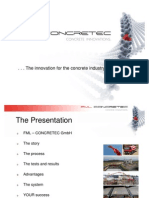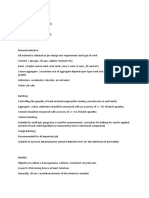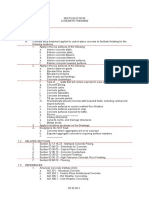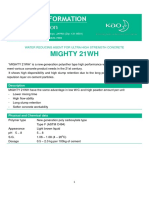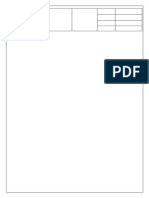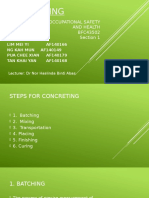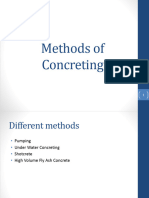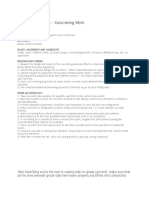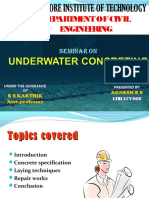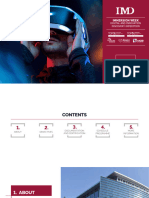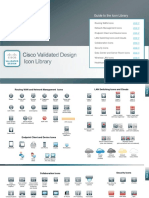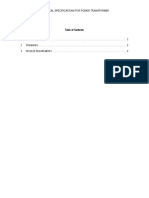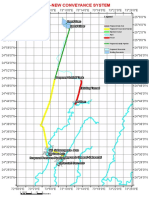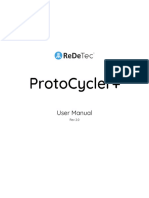0% found this document useful (0 votes)
62 views3 pagesMethod Statement of Colcrete Grouting.
This method statement outlines the procedures for mixing, placing, and curing Colcrete (colloidal concrete) for applications such as grouting and marine construction. It includes specifications for materials, equipment, mix design, and quality control measures, as well as health and safety guidelines. Environmental controls are also addressed to minimize impact during the process.
Uploaded by
deepakslathiaCopyright
© © All Rights Reserved
We take content rights seriously. If you suspect this is your content, claim it here.
Available Formats
Download as DOCX, PDF, TXT or read online on Scribd
0% found this document useful (0 votes)
62 views3 pagesMethod Statement of Colcrete Grouting.
This method statement outlines the procedures for mixing, placing, and curing Colcrete (colloidal concrete) for applications such as grouting and marine construction. It includes specifications for materials, equipment, mix design, and quality control measures, as well as health and safety guidelines. Environmental controls are also addressed to minimize impact during the process.
Uploaded by
deepakslathiaCopyright
© © All Rights Reserved
We take content rights seriously. If you suspect this is your content, claim it here.
Available Formats
Download as DOCX, PDF, TXT or read online on Scribd
/ 3








